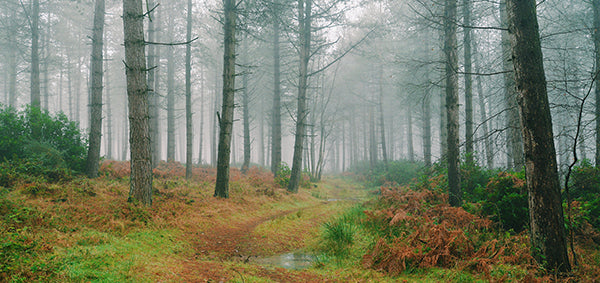The Environmental Impact of our Death - Part 2
By Linda Banks
In Part 1 Linda Banks reviewed the impact our traditional death care practices are having on our environment. In Part 2 Linda looks at the environmental impact of cremation and offers some suggestions for greener burial practices.

How does cremation affect the environment?
Cremation is the second most common method of disposition of final remains in the United States. The cremation process produces emissions that include particulate matter, carbon monoxide, nitrogen oxides, organic compounds, and hydrochloric acid. The content varies according to the bodies cremated that may have emissions from artificial body parts, hip replacements and breast implants. The long term effect of emissions from the growing number of cremations and resulting emissions is not known.
Why choose cremation over traditional funerals?
Some people choose cremation because they want to limit their impact on the planet when they die. Cremation reduces the human remains to ashes, which can be scattered or buried in funeral urns. Some cemeteries will permit the burial of urns, and while they may require a small urn vault, the space taken up for burial of the cremation urn is much smaller. Cremated remains are non-toxic and may be safely scattered in water, air, or buried in the ground.
The cost of cremation is significantly less than a traditional burial. Options available for memorializing the deceased can be tailored around the wishes of the deceased and/or the family.
The National Funeral Directors Association (NFDA) predicts that by 2017 approximately fifty percent of deaths will result in cremation. Cremation is the most common choice in many countries including India and England for religious and cultural considerations, and Japan where the availability of land is an issue.
Cremation Emission Factors
The Environmental Protection Agency does not regulate crematoriums, and have delegated the oversight to individual states. Under the Federal Clean Air Act, the states are permitted to enact stricter rules than the EPA to ensure good air quality. Most states require that crematories have permits and meet requirements to ensure that emissions generated are controlled. Crematories use natural gas, electricity, and propane to power the unit with the subsequent release of greenhouse gases.
Crematory manufacturers work hard to make sure that there are no visible emissions or odors from their operation. The possibility of controlling the environmental impact is greatly increased with cremation.
What are green alternatives for burial?
There are choices we can make regarding our death and burial. If you wish to be buried, you can choose not to be embalmed. There are no laws, state or federal, that require embalming, except in the case of communicable diseases or if the body must be transported. Dry ice can be used for temporary preservation. Also, there are a growing number of cemeteries that do not require the use of coffins or vaults, and permit burial in biodegradable caskets or burial shrouds. The Green Burial Council has information about green burial sites in the United States, and other resources respecting green funerals.
Cremated remains are non-toxic and can be safely buried in the earth or scattered at sea, using biodegradable cremation urns that decompose naturally. Many cemeteries are starting to accept urns for ashes for burial. While some cemeteries require containers to hold the cremation urns, they still require less space than is required to bury a casket. Columbaria are also available at some cemeteries and churches that provide small niches to store individual cremation urns. For those who wish to scatter ashes, there are scattering urns available to help disperse the cremated remains into the ocean or other site. The scattering urns are biodegradable, and can also be buried or recycled after use.
With thoughtful planning it is possible to make funeral arrangements that are not harmful to those still living and are less harmful to the earth. As with any end-of-life planning, it’s important to communicate your wishes, in writing, to your family.
Linda Banks provided extended end-of-life care for her beloved Aunt who was like her mother. When her brother suddenly died, she was instrumental in orchestrating all of the details of his final wishes to be cremated. Linda has been an active blogger for ten years, including blogging about Willie Nelson and his family. Willie told her recently that he reads her blog every day.

